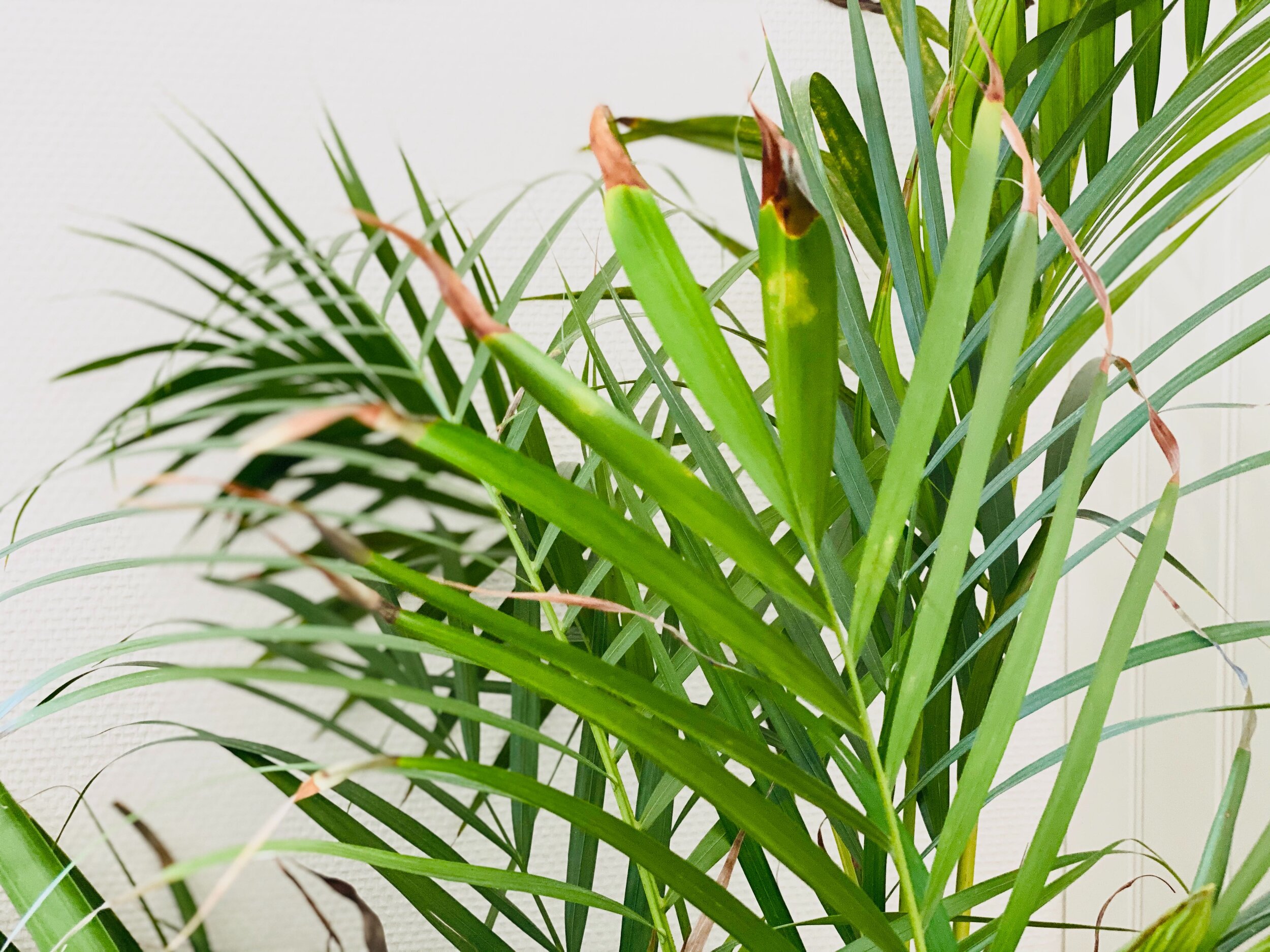Why is this happening?
Dry air can cause leaf damage on many plants. Some simply can't take it at all, while others might be acclimated to it over a period of time. The humidity in most homes is much lower than what you'd find in a plant's natural habitat. Most plants are adaptable to a range of humidity levels but some remain sensitive.
Symptoms
Dry, browning leaf tips and edges despite avoiding under and overwatering
Curled leaves
Newly developed leaves don't unfurl or have damage once unfurled

What to do now
Invest in a humidifier and place it close to your plant. This is a quick and effective solution to increase the humidity levels of your home
Place the pot on a tray of pebbles filled with water. Make sure that the plant's soil isn't in contact with the water to avoid root rot
Group plants with similar lighting and humidity needs together. Each plant gives off moisture through the process of transpiration, this will mean that the air surrounding a grouping of plants will be slightly more humid
Mist more often. Misting doesn't actually have much of an effect on the humidity in the air but can reduce water loss and cool down plants' leaves when conditions are warm and dry. Misting can help create a more natural environment and also keep plants leaves clean from dust and debris
Remember that plants want to live in an evironment as close to their natural home as possible
For plants that like a very high humidity level, you could even consider using a terrarium, glass box or plant cabinet
Common questions
How can I prevent this in the future?
To assess how you can create a better environment for your plants, it's important to first understand contributing factors in your home. For example, do you use air conditioning in the warmer months? This will make the air significantly drier. Do you have good air circulation in your home? If not, a small fan nearby your plants will help improve air flow. Do you have constantly or even just seasonally dry air? If you're feeling it, your plants are likely feeling it as well. ItSimply put, the easiest solution to a dry air problem is to invest in a humidifier.
What are the benefits of increasing the humidity levels?
Increased humidity can help your plants in many ways. Not only does it help your plant to drink and transpire water in a healthy way, it can also help unfurling leaves emerge without issues. Humidity levels within the plants preferred range means better and faster growth.